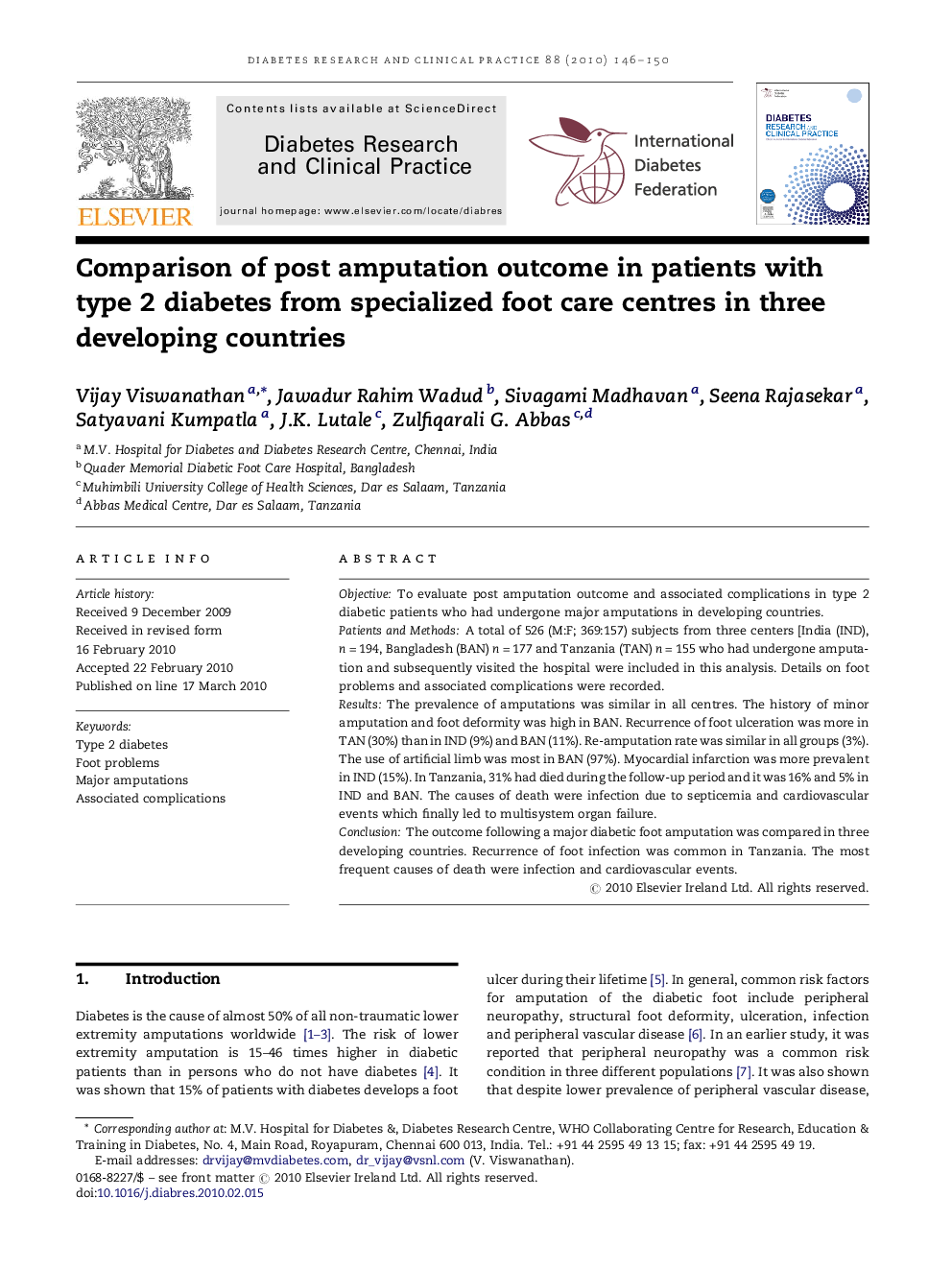| Article ID | Journal | Published Year | Pages | File Type |
|---|---|---|---|---|
| 2797525 | Diabetes Research and Clinical Practice | 2010 | 5 Pages |
ObjectiveTo evaluate post amputation outcome and associated complications in type 2 diabetic patients who had undergone major amputations in developing countries.Patients and MethodsA total of 526 (M:F; 369:157) subjects from three centers [India (IND), n = 194, Bangladesh (BAN) n = 177 and Tanzania (TAN) n = 155 who had undergone amputation and subsequently visited the hospital were included in this analysis. Details on foot problems and associated complications were recorded.ResultsThe prevalence of amputations was similar in all centres. The history of minor amputation and foot deformity was high in BAN. Recurrence of foot ulceration was more in TAN (30%) than in IND (9%) and BAN (11%). Re-amputation rate was similar in all groups (3%). The use of artificial limb was most in BAN (97%). Myocardial infarction was more prevalent in IND (15%). In Tanzania, 31% had died during the follow-up period and it was 16% and 5% in IND and BAN. The causes of death were infection due to septicemia and cardiovascular events which finally led to multisystem organ failure.ConclusionThe outcome following a major diabetic foot amputation was compared in three developing countries. Recurrence of foot infection was common in Tanzania. The most frequent causes of death were infection and cardiovascular events.
